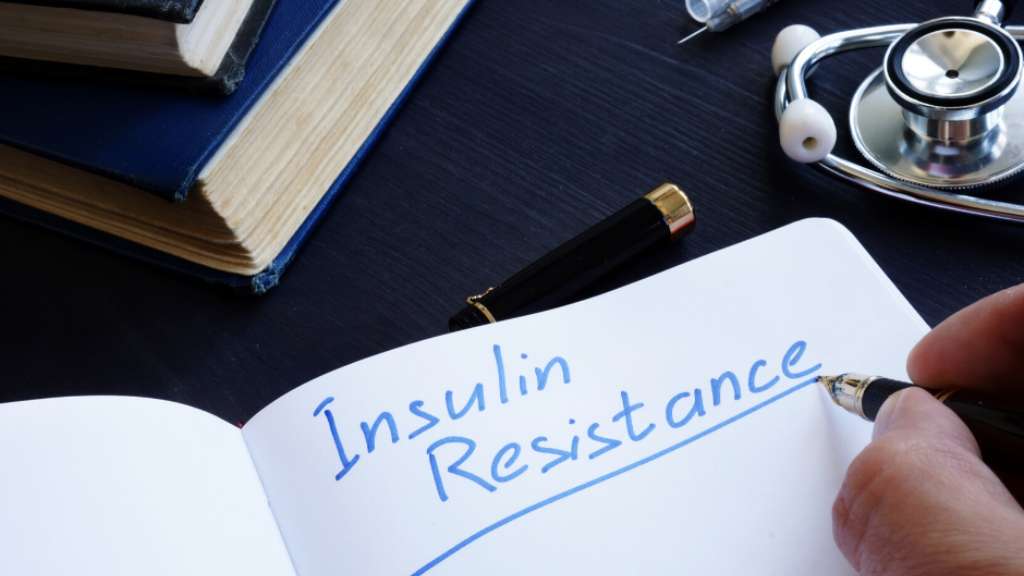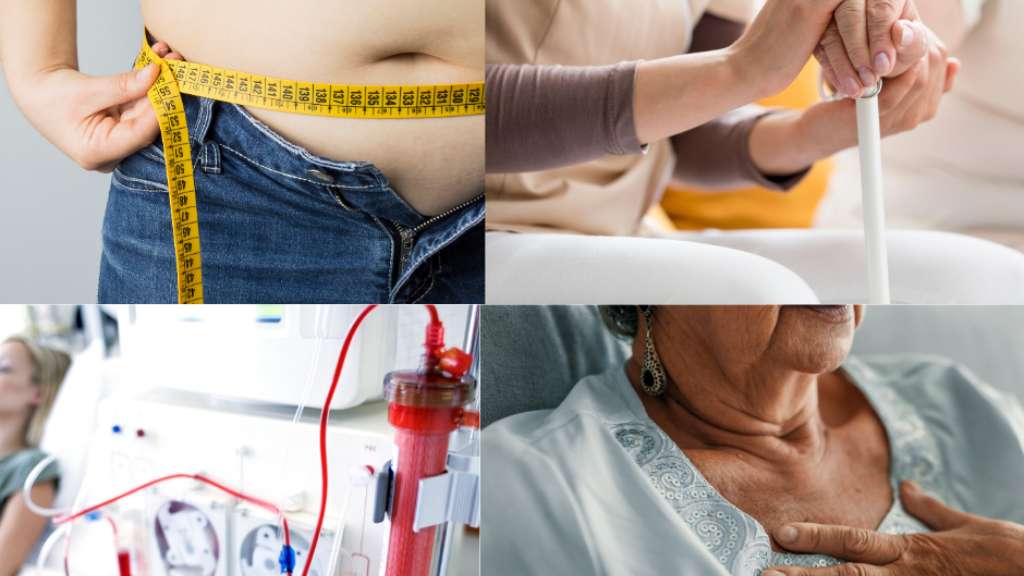By Dr. Sarah Bennett, NMD / August 13, 2020

Since 1980, the number of people diagnosed globally with type 2 diabetes has quadrupled.
Diabetes is a major public health concern, classified as a global epidemic, affecting upward of 422 million people worldwide. In the United States alone over 50% of the adult population is diagnosed with diabetes or prediabetes, affecting 14.3% and 38% of the population respectively. (1)
This means that currently more American’s are sick then healthy.
It has only been 40 years since this dramatic increase in the prevalence of type 2 diabetes and is not projected to slow in growth any time soon. (2)
In addition, diabetes alone is a heavy burden on the global annual health budget, with an estimated 15% designated to the treatment of this disease and its complications. The United States alone spent $245 billion on treatments and loss in productivity due to diabetes. (3)
So why is diabetes spreading through our population like a weed in your front yard?
Why have we spent hundreds of billions of dollars on treatment, research, and development of new pharmaceuticals and surgeries yet still fail in the management and prevention of this disease?
Within the last 40 years, sugars and refined foods have become more common in our daily diet, exercise more scarce, and sleep increasingly more limited.
Type 2 Diabetes is a disease that slowly develops over years as the result of a combination of dietary, lifestyle, and genetic factors, and as long as we fail to treat the root cause of this disease we will fail to have a cure.
The development of diabetes is not inevitable, and oftentimes may even be reversed. For prevention or reversal of diabetes it is essential to understand how it develops, presents, common conventional treatments, and natural and nutritional treatment alternatives.

So what is type 2 diabetes? As mentioned above, type 2 diabetes is a chronic condition characterized by consistent, abnormally, elevated blood glucose (blood sugar) levels. This develops slowly over the years as the result of a combination of dietary, lifestyle, and genetic factors.
Every function in the body happens due to a signal.
For example, blood glucose rises after every meal (and often sweet drinks), which will signal the release of insulin. Insulin is a hormone released from the pancreas in response to elevated blood glucose, which signals the cells to take in this glucose from the bloodstream to use it as energy, or to store energy for later as fat.
In a healthy body, blood glucose will moderately rise after a meal, insulin will then moderately rise to help bring blood glucose levels back to normal. Eating frequently and foods that are digested into simple sugars easily, will over time cause elevated insulin productions and peripheral insulin resistance.
Peripheral insulin resistance happens when blood glucose is frequently elevated, causing insulin to pack more and more glucose into cells. These cells become full and unable to take in any additional glucose. Insulin must then rise higher and higher to sufficiently lower blood glucose levels and pack it away into our cells.
This forced packing away of glucose into our cells includes our fat cells and is why obesity and diabetes come hand in hand.
Further down the line, the beta cells of the pancreas will be unable to keep up with the body’s need for insulin and will begin to burn out and produce insufficient amounts.
Having a family history or genetic link increases the risk of this pancreatic burnout.
What causes type 2 diabetes? Diabetes is the result of a long progressive development of peripheral insulin resistance due to chronically elevated blood glucose and insulin, and pancreatic burn out causing insufficient insulin levels to keep blood glucose within normal limits.
Diabetes is often asymptomatic throughout the development and in the early stages of the disease, although some individuals may present with significant symptoms early on.
These signs and symptoms are evidence that chronically elevated blood sugar levels have started to cause organ damage. Although the body has wonderful innate healing ability given the proper environment, in some cases this organ damage can be permanent.
This is why it is so important to have regular blood work run by your local naturopathic physician.
All of the most common signs and symptoms caused by diabetes are listed below. But, be aware that not all people will present with each one, even in the latter stages of the disease.
Polyuria or frequent urination is caused when blood glucose levels are consistently elevated, and the kidneys are unable to reabsorb the high quantity of glucose back into the blood. This causes glucose to spill over into the urine (although it should not be here) and increase urine volume.
Polydipsia or persistently being thirsty is typically present in combination with polyuria. Due to losing high volumes of water because of the increased urine output, our body’s natural response is to increase thirst. Also, blood glucose levels increase the osmolarity of the blood, which is highly controlled by the body. To correct this, our body signals to increase thirst.
Fatigue and restlessness are common since the cells of the body begin to develop insulin resistance, inhibiting their ability to take up glucose from the bloodstream to convert into energy.
Polyphagia or an increase in appetite is developed in a similar way to fatigue and restlessness. Since the cells of the body develop insulin resistance in response to elevated blood sugar, this sugar does not enter the cells to be converted into energy. This lack of energy prosecution sends a signal to the brain that the body is starving. In response the brain sends out a signal telling the body to eat.
Weight Gain is seen as insulin rises due to consistently elevated blood sugar levels. This progressive elevation of blood sugar and insulin begins to force more and more glucose into fat cells to be stored as energy for later. This process stimulates progressive weight gain and later on, obesity.
Weight loss is seen more in severe cases of type 2 diabetes. It begins to happen when the body cannot produce enough insulin to overcome the developed insulin resistance. Due to insufficient insulin, cells do not take up blood glucose for energy and will begin to waste away. Weight loss is more common in type 1 diabetes, a disease characterized by the autoimmune destruction of insulin-producing cells in the pancreas, leading to chronically low insulin levels.

Although, female sexual dysfunction is a known complication of type 1 diabetes caused by significant damage to the nerves and blood vessels, even after 70 years of research this complication as a result of type 2 diabetes is still considered controversial.
Similar to other complications caused by diabetes, erectile dysfunction and female sexual dysfunction are caused by damage to the small and large blood vessels and nerves in the genetal region.
In addition, the development of atherosclerotic plaques in large blood vessels as a result of diabetes will block blood flow in the penis further contributing to erectile dysfunction.
Remember, people may present with little or no symptoms until diabetes significantly progresses.
Chronic severe diabetes can ultimately lead to organ damage, causing the following signs and symptoms listed above: blurred vision, paresthesia, erectile dysfunction, polyuria, poor wound healing, and weight loss.
These symptoms should be taken as warning signs to take action, and see your naturopathic physician.
If you find yourself with this diagnosis or experiencing some of these symptoms do not despair! There are actions you can take to help prevent progression and even reverse this process.

The majority of conditions and diseases affect one primary organ system.This is not the case for diabetes. As diabetes progresses it damages every organ system in the body in multiple ways leading to a multitude of complications. The sad truth is that diabetes is the leading cause of blindness, amputations, infertility, nerve damage, dementia, kidney failure, cardiovascular disease, and stroke. (1)
To make matters worse these complications can and often are life-threatening, which is exactly why it is important to take action and educate yourself on the ins and outs of this disease.
These complications are discussed below to provide you with a full understanding of risks associated with diabetes.
Diabetes is a disease classified by elevated blood glucose, that is caused by insulin resistance leading to higher and higher insulin levels.
What you need to know about insulin is that it is a potent storage signal, causing our body to store excess blood glucose in the form of fat under our skin and inside our organs.
During the development of insulin resistance and diabetes, a person’s insulin levels continually increase until our body can no longer increase the level being produced.
Throughout this time period, often years, obesity often develops as a result.
In addition, many diabetes treatments cause additional weight gain including but not limited to: meglitinides, sulfonylureas, thiazolidinediones (TZDs), and insulin.
In the United States, the leading cause of kidney failure is diabetic nephropathy or diabetic kidney disease (DKD). An astonishing 30-40% of people diagnosed with diabetes are found to develop DKD. (6)
Chronically elevated blood sugar damages the vessels present in the kidneys, leading to improper filtration of waste made by the body. Over time this damage leads to chronic kidney disease resulting in changes in frequency of urination, fatigue, weakness, nausea, difficulty sleep, swelling of the extremities, and more. If the damage continues to progress this can even lead to end stage kidney failure requiring dialysis. Dialysis is a therapy used to filter the blood when the kidneys shut down and are no longer able to.
The Center for Disease Control and Prevention reported in 2008 that approximately 44% of kidney failure requiring dialysis were caused by diabetes. (7)
Eye damage is an extremely common complication of diabetes, with current estimates reporting that diabetic retinopathy accounts for 2.6 million cases of moderate to severe vision impairment in the world. Projections predict this number will increase to 3.2 million per year by 2020. (8)
This eye damage, also known as diabetic retinopathy, is the result of slow degradation of the small vessels in the eye due to chronically elevated glucose.
When this degeneration affects the retina, vision begins to fail. The retina is important because it is a light sensitive layer in the back of the eye that converts light input into neural signals for the brain to recognize as vision. (9). Diabetic retinopathy can cause blurring of vision and over time, even blindness.
Diabetes is a huge risk factor for the development of cardiovascular diseases like hypertension and coronary artery disease (CAD). (10) An estimated %32.2 of type 2 diabetics develop cardiovascular disease.
Diabetic patients usually have elevated cholesterol and triglycerides which over time causes cardiovascular disease such as coronary artery disease and atherosclerosis.
If you are a diabetic, you tend to have higher low-density lipoprotein (LDL) or “bad” cholesterol and lower high-density lipoprotein (HDL) or “good” cholesterol. More often than not, diabetic patients will also have high triglycerides, a type of lipid or fat in the blood, that is elevated when excess calories, primarily carbohydrates and sugars are not used by the body, and instead are converted into triglycerides and stored in our fat cells.
Cardiovascular disease is actually the primary cause of death in diabetic patients! And that’s not all.. Cardiovascular disease is reported to reduce life expectancy by 10 years! (11)
44% to 60.2% of diabetics suffer from hearing loss. (12,13,14) It is a devastating complication that may become irreversible, but it is preventable when you diagnose and treat diabetes early on.
Chronically elevated glucose seen in diabetes slowly erodes the small blood and neurological vessels in the inner ear leading to the complication of hearing impairment. (15)
Chronically elevated blood sugar in diabetes, slowly damages various organ systems of the body, and the nervous system is not spared. Both the brain and peripheral nerves are eroded due to the constant elevation of blood sugar.
When elevated blood sugar degenerates nerves of the extremities, peripheral neuropathy is the result.
50% of adult diabetics have peripheral neuropathy, leading to numbness, tingling, pain, and weakness. It can even lead to foot ulcers, and lower-limb amputations in extreme cases. (16)
Over time, elevated blood glucose and insulin levels will also degenerate the central nervous system in the brain, contributing to the development of dementia. More specifically, Alzheimer’s disease.
Alzheimer’s disease is the 7th leading cause of death in the United States and has been recently linked to type 2 diabetes.
Alzheimer’s Disease has such a strong association with diabetes that researchers have begun calling it “type 3 diabetes”. Although this term is highly controversial, the name is derived from the determination that the development of Alzheimer’s disease is highly the result of insulin resistance, inflammation, and dysfunctional signalling of insulin-like growth factor (IGF) in the brain. (17)
Azheimer’s disease is well known for its progressive deteriorating effects on memory and personality, but in addition the disease gradually destroys the person’s ability to learn, communicate, and even carry out simple daily tasks.
15% of patients who are diabetic are estimated to develop foot ulcers in their lifetime, and of the 15%, 15-20% will need foot amputation in the future. The problem is not just losing a limb but the emotional and psychological burden that comes with it. (18,19)
A foot ulcer will usually begin with the formation of a callus caused by neuropathy. This neuropathy causes deformity and decreased sensation which makes the foot prone to trauma. After repeated trauma, subcutaneous bleeding sets in, leading to inflammation and eventual ulceration. These ulcers may vary in depth, often affecting tissues as deep as tendons, ligaments, and muscles. If these ulcers persist without healing the tissue will begin to decay and develop gangrene often leading to amputation.
50% of patients with diabetes will develop fatty liver. Chronically elevated blood glucose, high inflammation levels, and insulin resistance all contribute to the slow build-up of adipose (fat) tissue in the liver, resulting in the development of the fatty liver disease. Fatty liver disease is present in up to 50% of patients with diabetes.
Fatty liver disease is often asymptomatic but may present with nausea and upper right quadrant abdominal pain or discomfort. Elevation in liver enzymes, fasting insulin, HbA1c, and cholesterol on routine lab work are often the first evidence of Fatty liver disease. Although these blood tests are not diagnostic, the diagnosis is easily made with an abdominal ultrasound.
Although fatty liver disease is often asymptomatic, the diagnosis is not benign. If progression continues it may lead to complications such as esophageal varices, cirrhosis, ascites, and even liver cancer.
The association of diabetes with many cancers may be due to their shared risk factors such as aging, obesity, and lifestyle risks (diet, and lack of physical activity).
Type 2 diabetes increases the risk of developing several types of cancer including colon cancer, breast cancer, pancreatic cancer, liver cancer, endometrial cancer, and bladder cancer. Despite the known risk associated with diabetes, the cause of development is not well understood. (20)
Diabetic Ketoacidosis or DKA is the most emergent hyperglycemic complication in both type 1 and type 2 diabetes affecting 46 to 80 per 10,000 people per year (21). Although DKA primarily affects type 1 diabetics, it is more rarely seen in type 2 diabetes and is often life threatening.
DKA is a serious complication occurring when the body produces too many ketones causing the body to become more acidic. Ketones are products of the liver created when insulin is insufficient to metabolize blood glucose into energy. Due to insufficient insulin levels, fat tissue releases free fatty acids into the bloodstream, which are also converted into ketones in the blood further increasing acidity of the body. Glucagon begins to signal the liver to release glucose continuing to elevate blood glucose levels, causing the blood to become hyperosmotic.
Symptoms of DKA often occur quickly but may vary in severity, from mild feelings of excessive thirst, and frequent urination, to abdominal pain, nausea and vomiting or even coma and death.
DKA is usually caused by an infection in the lungs (pneumonia) or the bladder (urinary tract infection) , because of this infection the body tends to produce higher levels of hormones like cortisol or adrenaline, which subsequently affects insulin. It may also be caused by a missed insulin dose or inadequate dose leading to a rapid increase in the blood sugar and ketoacidosis.
The vast number of complications that result from diabetes is why “out of sight out of mind” is not the motto when it comes to this disease.
If you or a loved one has the diagnosis of diabetes or pre-diabetes be sure to regularly see your naturopathic physician to keep a close eye on your blood levels and develop a plan to reverse the development of this disease.

Diabetes is a complicated disease having many factors that play a role in the development process. It is important to understand the risk factors associated with diabetes, in order to evaluate personal and family chances of developing the disease.
The risk factors of diabetes are often divided into two categories:
Things like your genetics, heredity, and age are non-modifiable risk factors.
Yet, one of the extremely important risk factors is modifiable.. Lifestyle.
Below, we have listed each of the major risk factors for developing diabetes. To provide you with more detailed information about these risk factors, and a better understanding of your personal risk I have written a detailed article specifically on this topic. To educate yourself further on the risk factors of developing diabetes and how they may pertain to you read my article on risk factors of type two diabetes.

Simple blood tests are able to measure insulin, and blood glucose control, which are used to evaluate diabetes risk and diagnosis.
Prevention is the name of the game!
Remember that in any disease, prevention is always better than cure. And the only way to ensure prevention of diabetes is through completing regular blood tests.
The American Diabetes Association’s diagnostic criteria for diabetes are the following: (22)
1. Hemoglobin A1c (HBA1c) results of more than or equal to 6.5%, tested in a laboratory using a standardized method.
OR
2. Fasting Blood Glucose of more than or equal to 126 mg/dl or 7.0 mmol/l is diagnostic. This test is taken after a fasting period of 8 – 12 hours.
OR
3. 2-Hour Plasma Glucose of more than or equal to 200mg/dl or 11.1 mmol/l during an oral glucose tolerance test is diagnostic. This test is measured after consuming a glucose-containing drink which contains 75g anhydrous glucose dissolved in water.
OR
4. Random Blood Glucose In a patient with the classic symptoms of diabetes or hyperglycemia a random blood glucose of more than or equal to 200mg/dl or 11.1mmol/l is diagnostic.
If you have not checked these numbers recently or are concerned that you may have diabetes ask your naturopathic physician for a comprehensive workup.
Modern technology has made some of these tests easily accessible from the comfort of your own home.
Fasting, random, and postprandial glucose can be measured using a personal glucometer. These are often used daily by diabetics to ensure proper management of blood glucose levels.
HbA1c levels are also easily measured from home, using personal devices sold at local pharmacies.

Conventionally, diabetes is treated utilizing anti-diabetic medications, insulin therapy, and surgery.
Although these therapies do not cure the disease, they are often effective in managing blood glucose levels and slowing the progression.
When it comes to any disease it is important to understand all treatment options available, enabling you to make an educated decision on how to proceed with your own choice in therapy. Below I have listed the most common conventional medications, Insulins, and surgeries used to treat type 2 diabetes.
For a better understanding of conventional treatments for diabetes please read my comprehensive article on this topic.
There are now six main types of insulin available in the market: (23)
Each type of insulin is differentiated by 3 characteristics: Onset, Peak time, and Duration.
Diabetes is a disease of diet and lifestyle, and therefore it is not surprising that treatment with medications, and surgery do not provide prevention or cure without significant changes to what we eat and daily habits.
But don’t forget! The primary modifiable risk factor for developing diabetes is lifestyle!
This is why natural therapies, involving herbal and nutrient supplementation, nutrition reform, sleep hygiene, stress management, and exercise are highly effective at preventing and treating diabetes.
Below I have outlined my favorite research backed natural therapies for the prevention and treatment of diabetes.
For more detailed information on natural therapies for prevention and treatment of diabetes please read comprehensive articles on these topics.

Essential micronutrient deficiencies are becoming more and more prevalent, affecting approximately 2 billion people worldwide.(25)
Sufficient micronutrient levels should be acquired through the diet. Due to the depletion of micronutrients in our soil and the lessening consumption of healthy produce, even those with access to healthy, and typically micronutrient dense foods are ending up with deficiencies.
Certain micronutrient deficiencies have been associated with and higher risk of developing insulin resistance and diabetes. Of which, the most highly researched are listed below.

Throughout history and across cultures, herbal medicines have been used to prevent and treat diabetes.
The herbal medicines contain active constituents that help with the proper production and activity of insulin, promotes healthy glucose absorption and metabolism, improves lipid levels, and decreases inflammation levels.
A few of the most researched and commonly used herbal therapies are listed below:
Hormones can affect your glucose metabolism.
Don’t forget that endocrine disorders and hormonal dysfunction may highly contribute to the development of insulin resistance and diabetes.
Dysfunctional hormone production is commonly seen in men and women of all ages, and oftentimes easily treated through natural and or conventional methods.
Some of the hormones that can impact the development of insulin resistance are listed below:
Be sure to have these hormones checked in addition to your blood glucose and insulin levels at your next naturopathic consultation.
For additional information on these hormones, their effect on the body, and natural therapies read the in depth articles I have written on these topics.
What are some nutritional guidelines to avoid type 2 diabetes?

Nutritional reform may be one of the most important changes made for the prevention of diabetes.
The most basic nutritional guidance provided to diabetics is to eat low on the glycemic index. This is a scale that assigns a number, 0 to 100, to food based on how quickly blood sugar rises after eating the food. Since dietary fat, and protein do not raise blood glucose levels significantly they were excluded from this scale. The larger the number the higher the spike in blood glucose. Generally speaking, to eat a low glycemic index diet, all processed food will be avoided.
Glycemic load is another scale similar to that of the glycemic index scale. Glycemic index is based on 50 grams of any carbohydrate, whereas the glycemic load additionally takes into account serving size, making this scale more accurate on how the blood sugar responds to eating each food.
A wonderful example provided in The Obesity Code, explains that although watermelon is relatively high on the glycemic index, rated at a 72, it is only 5% carbohydrates by weight. Basically, due to watermelon containing mostly water, a person would have to eat 2.2 lb of watermelon to ingest 50 grams of carbohydrates, making the rise in blood glucose due to 1 serving significantly lower than what the glycemic index reports.(1)
Although the glycemic load is a wonderful improvement upon the glycemic index, both scales fail to take into account the harmful effects of fructose. For more information on the negative effects of fructose on obesity and diabetes read my articles on the best natural treatments and nutritional guidelines for diabetes.
One of the easiest ways to begin eliminating food with a high glycemic load is to avoid all processed food, deserts, and sweet drinks.
The optimal nutritional guidelines for the prevention and treatment of diabetes dives much deeper than “eat a low glycemic load”. In fact there are specific dietary protocols that have been shown to lower insulin, improve blood glucose control, and even facilitate weight loss. Below I have listed some of my favorite research backed nutritional protocols for the prevention and treatment of diabetes.
For more information please read my detailed article on the best natural treatments and nutritional guidelines for diabetes.
What can I eat with type 2 diabetes? What food lowers my risk?

Although the prevalence of type 2 diabetes has grown at an overwhelming rate since 1980, it is not a predetermined condition, nor a death sentence.
There are many modifiable risk factors that are under our own control.
Since diabetes is a disease of dietary origin, lifestyle is arguably the most important risk factor…
…AND it is easily modified or changed.
Below is a quick list of some of the major points we covered in this article:
Start today by eliminating processed and sweetened foods from your diet, begin exercising regularly, work on sleep hygiene, and get up and move during the day!
For specific protocols tailored to your needs work with us at Natural Med Doc! Click here to book your free consultation today!
Hello, my name is Dr. Sarah Bennett, NMD!
I am a naturopathic physician licensed in the state of Arizona currently practicing at my office in Scottsdale, AZ. I received my degree from Southwest College of Naturopathic Medicine, did a year residency at Keystone Natural Family medicine, and received additional training for aesthetics & anti-aging at National Laser Institute.
My passion and fascination for natural medicine began during my undergraduate studies at Indiana University where I got a dual degree in neuroscience & psychology.
I saw how a preventative approach could help you live a long and youthful life. Since then I have dedicated my life to serving others to understand the latest medical trends.
I spend my spare time running, hiking, rock climbing, camping, testing out new diets, and reading books on latest medical trends / listening to podcasts to find the latest nuggets of knowledge to improve the quality of life for my patients. I look forward to serving you!